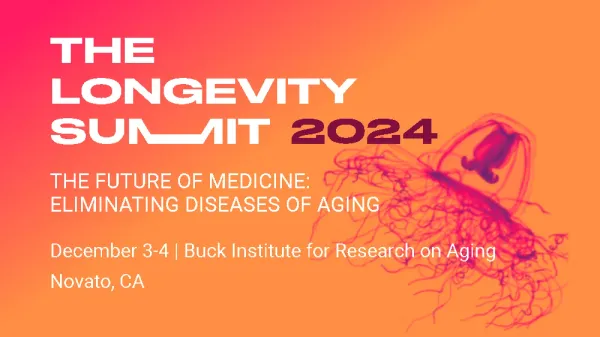Decoding the Lifespan Clock: From Horvath's Discovery to Predicting Lifespan Across Species
Explore how Steve Horvath's epigenetic clock revolutionized our understanding of aging and discover recent breakthroughs that predict lifespan traits across mammals. Learn about the accuracy of these tests and what their results mean for us.

Why do some creatures, like the tiny shrew, live for less than two years, while others, like the bowhead whale, can thrive for over two centuries? What determines these vast differences in lifespan, even among humans, where Jeanne Calment famously lived to 122 years? Scientists have long been fascinated by the secrets of aging, and recent breakthroughs, led by Steve Horvath of UCLA, are beginning to unravel these mysteries. In 2013, Horvath introduced the epigenetic clock, a tool that measures biological age by analyzing DNA modifications. Fast forward to today, and his work has expanded to predict lifespan traits across species, revealing astonishing insights into how and why different organisms age.
The Birth of the Epigenetic Clock: A Revolutionary Idea
In 2013, Steve Horvath made a groundbreaking discovery: as we age, specific chemical changes called DNA methylation occur at predictable rates across our genome. By analyzing these methylation patterns, Horvath created the epigenetic clock, which can estimate biological age with remarkable accuracy. This tool revolutionized aging research, providing a quantifiable measure of biological aging. Researchers could now study why some people age faster than others, evaluate the effectiveness of anti-aging strategies, and explore the links between aging and diseases like cancer and Alzheimer’s.
Advancing Aging Research: From Humans to Mammals
Horvath’s epigenetic clock enabled scientists to assess biological age in humans, but recent advancements have expanded its use to other mammals, opening new doors in understanding lifespan. A 2023 study published in Science Advances applied this tool to over 348 mammalian species, predicting key life-history traits such as gestation time, age at puberty, and maximum lifespan. Using tissue samples from the Mammalian Methylation Consortium, Horvath’s team analyzed DNA methylation sites and developed algorithms that closely predicted these traits, accurately reflecting known lifespans across species.
The Epigenetic Blueprint of Lifespan
One of the most intriguing findings of this study was the identification of an intrinsic lifespan signature—a methylation pattern that indicates the maximum lifespan of a species, detectable even in young individuals. This discovery suggests that lifespan is encoded in our DNA and is less affected by external factors like diet and lifestyle than previously thought. However, while genetics may set the boundaries of lifespan, how we age within those limits can still be influenced by environmental and lifestyle factors.
Overcoming Challenges: The Introduction of the IntrinClock
In 2024, researchers introduced a refined version of the epigenetic clock called the IntrinClock, which addresses previous limitations. The original clock was sensitive to changes in immune cell composition, affecting its accuracy. The IntrinClock focuses on DNA methylation sites unaffected by immune cell variations, providing more consistent biological age estimates. This innovation marks a significant leap forward in the precision of epigenetic clocks, ensuring reliable predictions regardless of immune fluctuations.
What These Discoveries Mean for Us: Understanding and Testing Longevity
The epigenetic clock has had a profound impact on health and longevity research. It has revealed that people with higher biological ages than their chronological age are at increased risk for age-related diseases. This insight offers a valuable tool for identifying individuals who might benefit from early lifestyle changes or medical interventions. Additionally, scientists now use the clock to evaluate anti-aging strategies, measuring biological age before and after interventions like dietary changes or medications to assess their effectiveness.
Applications Across Species: Implications for the Animal Kingdom
Beyond human health, these epigenetic clocks are shedding light on the lifespans of other species. For animals, the clock can reveal inherent lifespan potentials and reproductive strategies, offering invaluable data for conservation efforts. In species with long lifespans, such as whales, understanding the epigenetic underpinnings of longevity could help protect these creatures from extinction.
Are Epigenetic Clocks Accurate?
Extensive validation studies show that epigenetic clocks, including the IntrinClock, provide accurate predictions of biological age and lifespan traits across a wide range of mammals. In many species, these clocks have demonstrated remarkable consistency, accurately predicting maximum lifespans recorded in public databases like AnAge. Moreover, factors like diet and lifestyle seem to have minimal impact on maximum lifespan predictions, underscoring the genetic component of longevity.
Sex Differences in Lifespan Predictions
Interestingly, epigenetic research has also uncovered differences between males and females. In most species, females exhibit methylation patterns that suggest slightly longer lifespans than males. These findings are consistent with the broader trend of females living longer across many species, including humans.
What Can We Learn from These Insights?
While the epigenetic clock can predict biological age and lifespan potential, it’s important to remember that lifestyle factors still play a critical role in overall healthspan—the number of years we live in good health. Though our genetic makeup may set the upper limits of lifespan, how we care for our bodies through diet, exercise, and other habits can profoundly influence how well we age.
The Future of Longevity Research: A Glimpse into the Next Frontier
From Horvath’s original development of the epigenetic clock to recent expansions into lifespan prediction across species, our understanding of aging has evolved significantly. These tools reveal that while genetics set the framework of lifespan, lifestyle and environmental factors can influence the quality of life within those limits. As research continues, scientists may find ways to manipulate these epigenetic markers, potentially extending both lifespan and healthspan. This could not only transform how we approach aging in humans but also deepen our understanding of longevity in the animal kingdom.
Sources
- Horvath, S. (2013). DNA methylation age of human tissues and cell types. Genome Biology, 14(10), R115.
- Horvath, S., et al. (2023). Epigenetic predictors of maximum lifespan and other life history traits in mammals. Science Advances, 9(1), eabq4532.
- Wang, M., et al. (2024). Development of an epigenetic clock resistant to changes in immune cell composition. Journal of Epigenetics and Aging Research, 15(2), 101-115.
- Raj, K., & Horvath, S. (2020). Current perspectives on the cellular and molecular features of epigenetic ageing. Experimental Biology and Medicine, 245(17), 1532-1542.





